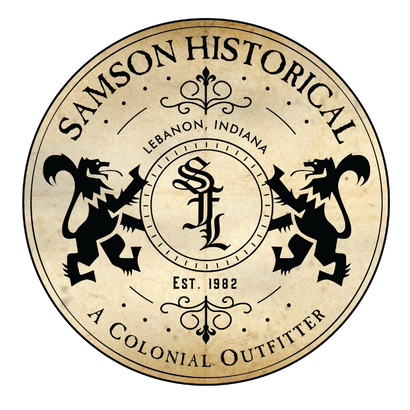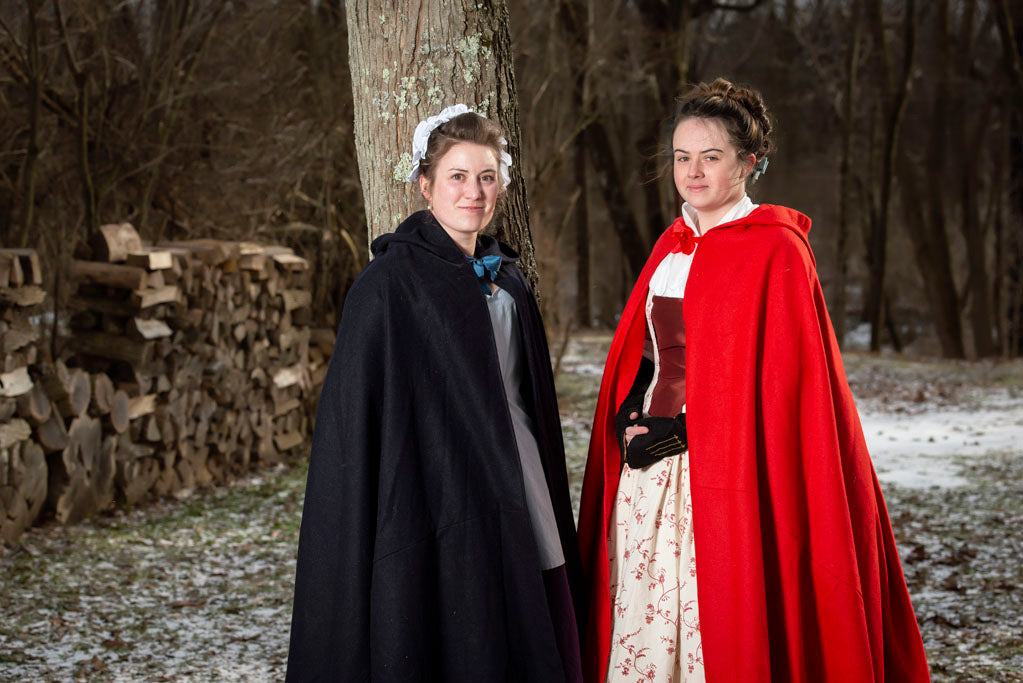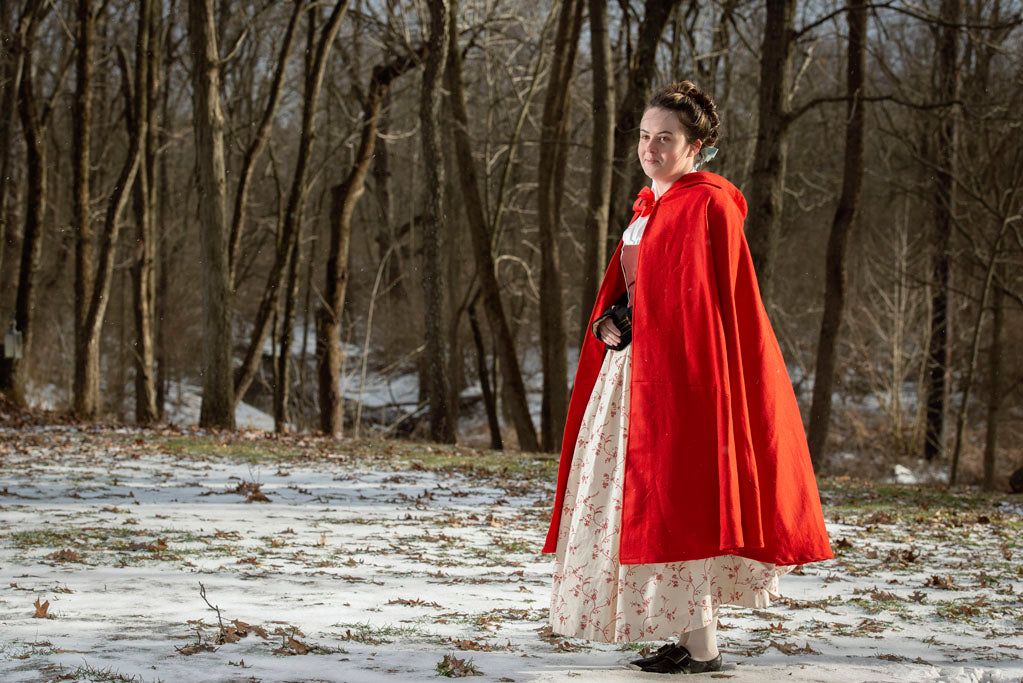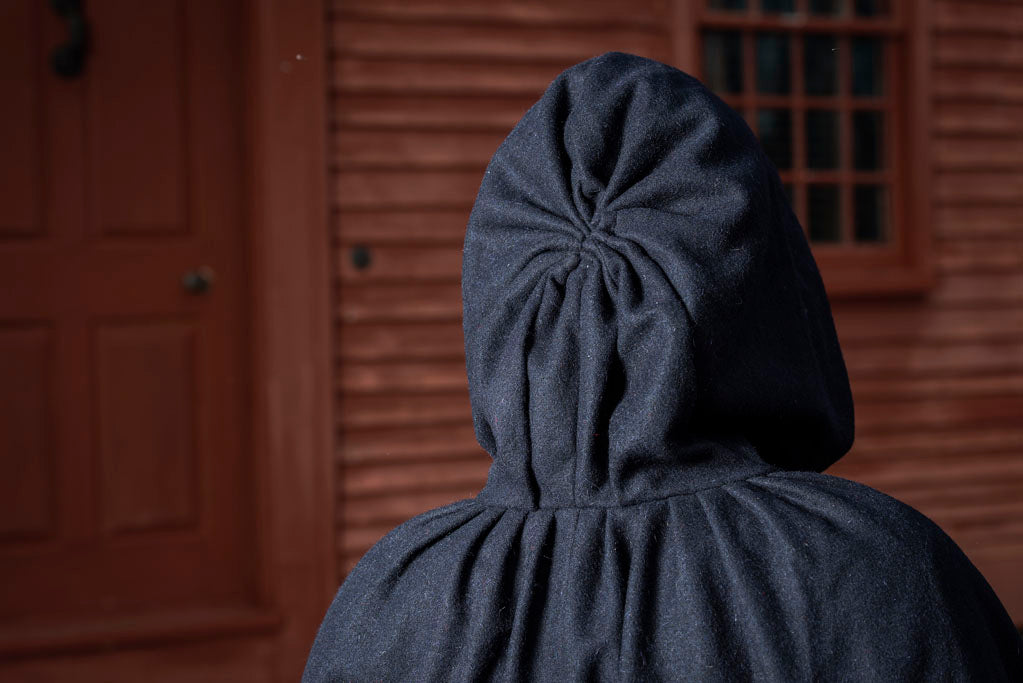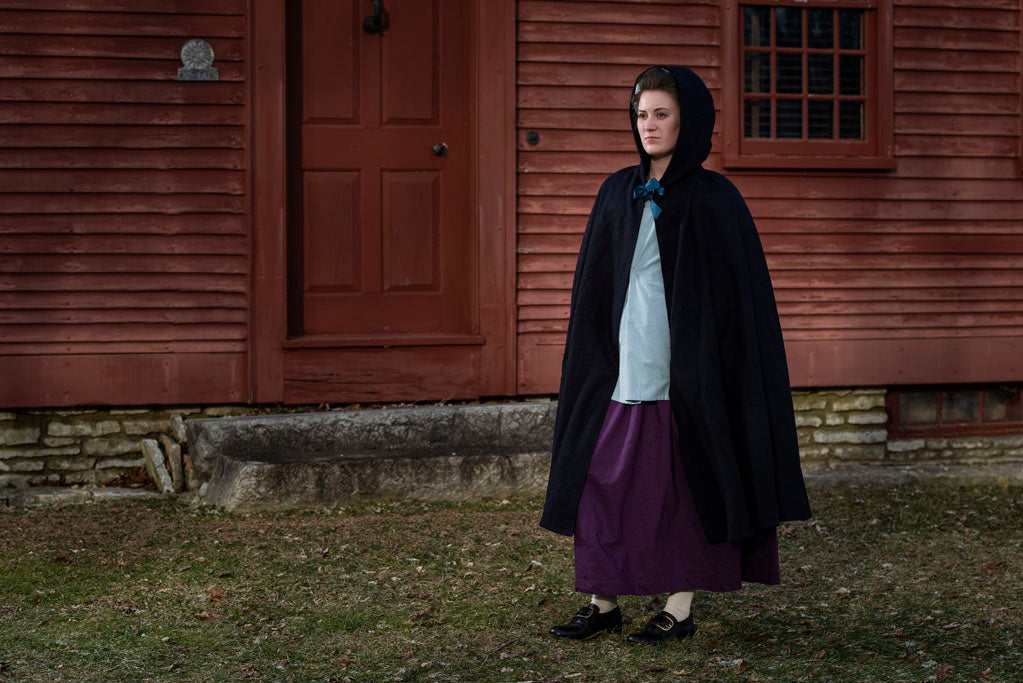-
Red cloaks were the most common for women in the 18th century. Nicknamed "Cardinal Cloaks," they were mass produced and sent over to the colonies. These have ties on the neck vs a clasp and are unlined, as are most originals. Blue is another frequently noted color for wool cloaks in the 18th century. This medium weight wool will keep you warm and dry without weighing you down.
This cloak is based on a piece in the Irma G. Bowen Collection from the University of New Hampshire Library.
c. 1750-1800. Woman's hooded "cardinal" cloak of heavily fulled red wool, full-length.
This style of hooded cloak, popular throughout the last quarter of the eighteenth century, is called a “cardinal” because of its bright red wool. The cloak itself is a full half circle, cut from 152.5 cm / 60 in. wool broadcloth and pieced at its bottom corners. The fabric is so densely woven and fulled that the hems and edges are left raw without fraying, and seam allowances are very small. The cloak is sewn to the bottom of a pieced collar, where it is gathered with six pleats. The hood is pieced on its sides and sewn to the top of the collar, with two pleats on either side of a center-back seam. Fabric at the back of the head above the seam is gathered into twelve pleats, then the folds of the pleats inside the hood are stitched firmly together to the top of the seam, causing them to fan out from the center. The pleat folds on the exterior of the hood are not sewn together, but are controlled from inside the hood by two rows of stitches. This and the heavy structure of the fabric allows the hood to stand away from the wearer’s head, so that headwear or hairdressing is not disturbed.
-
Historic Reproduction
